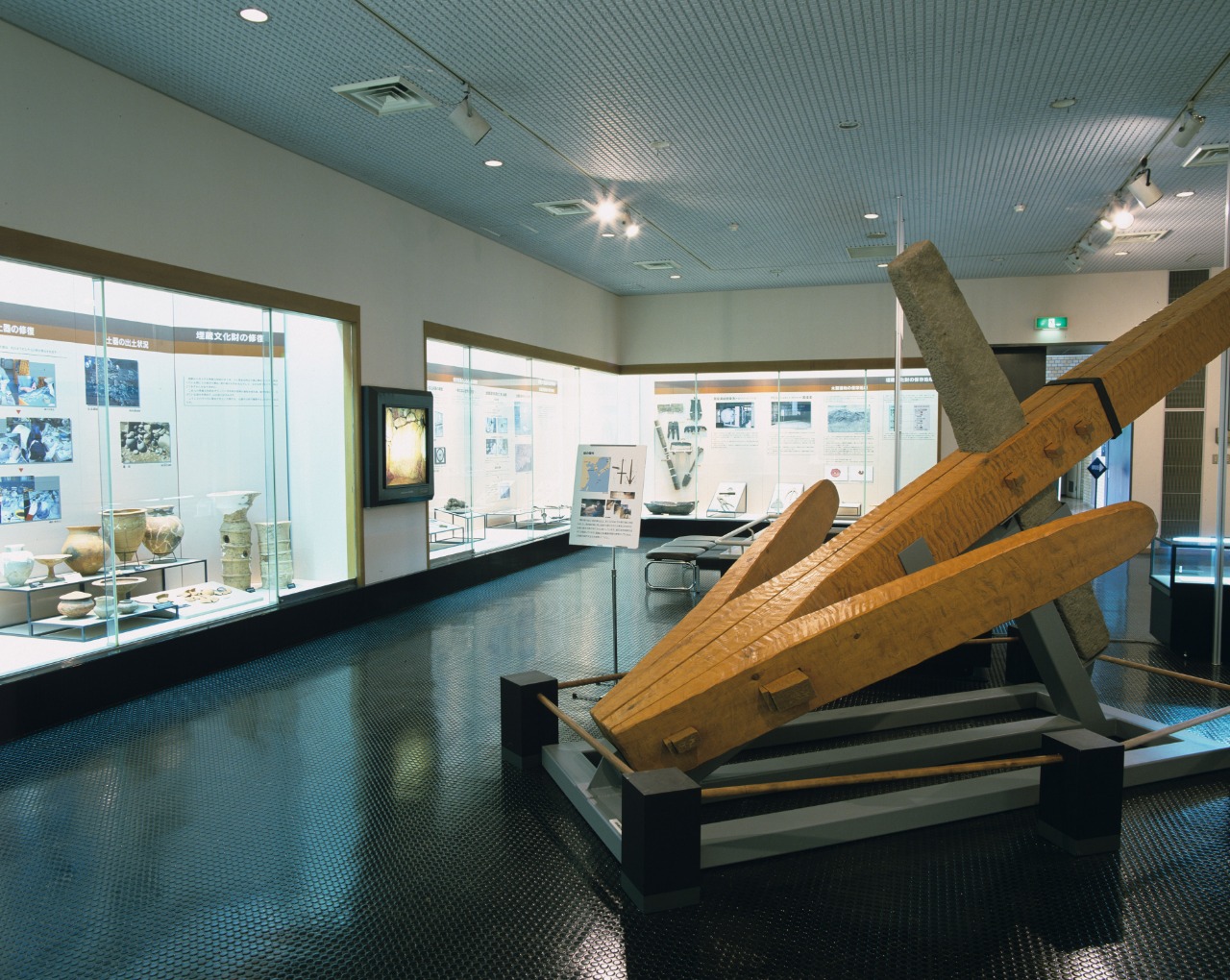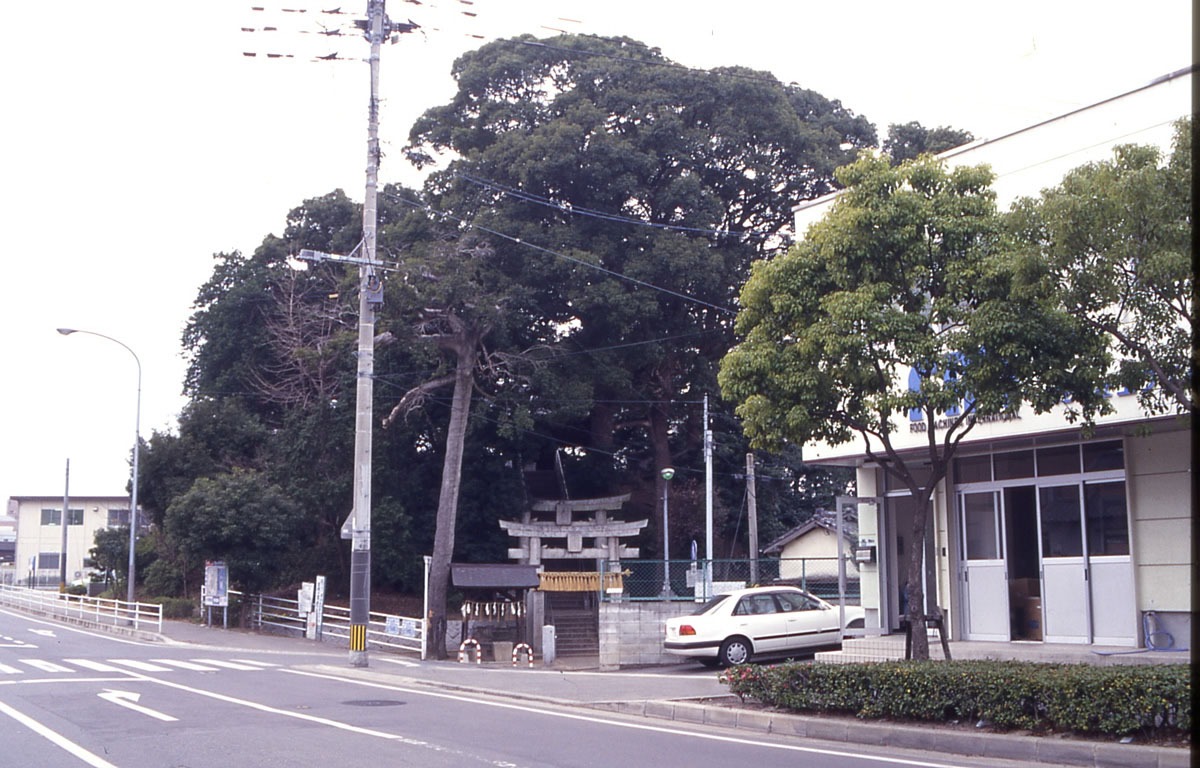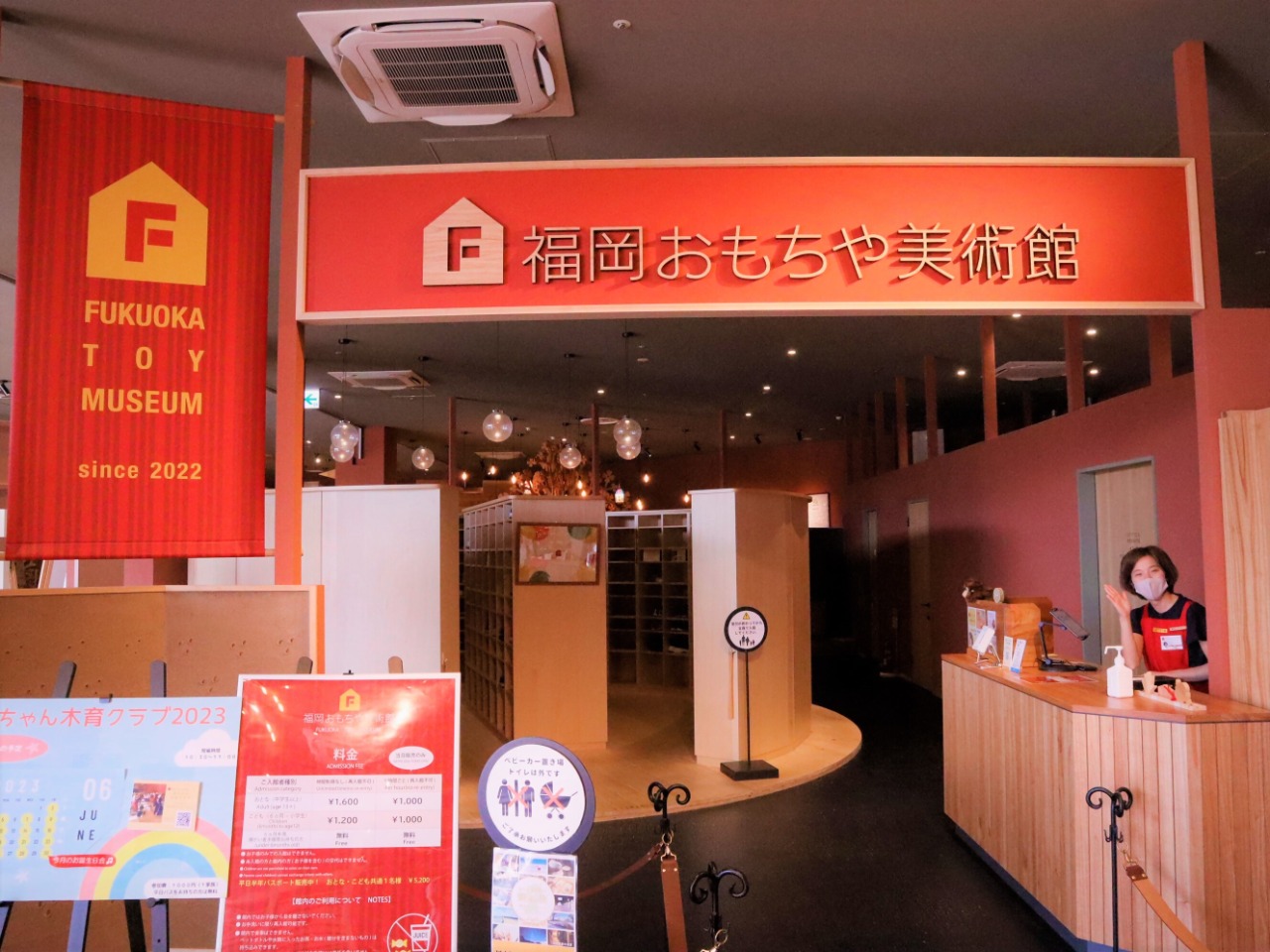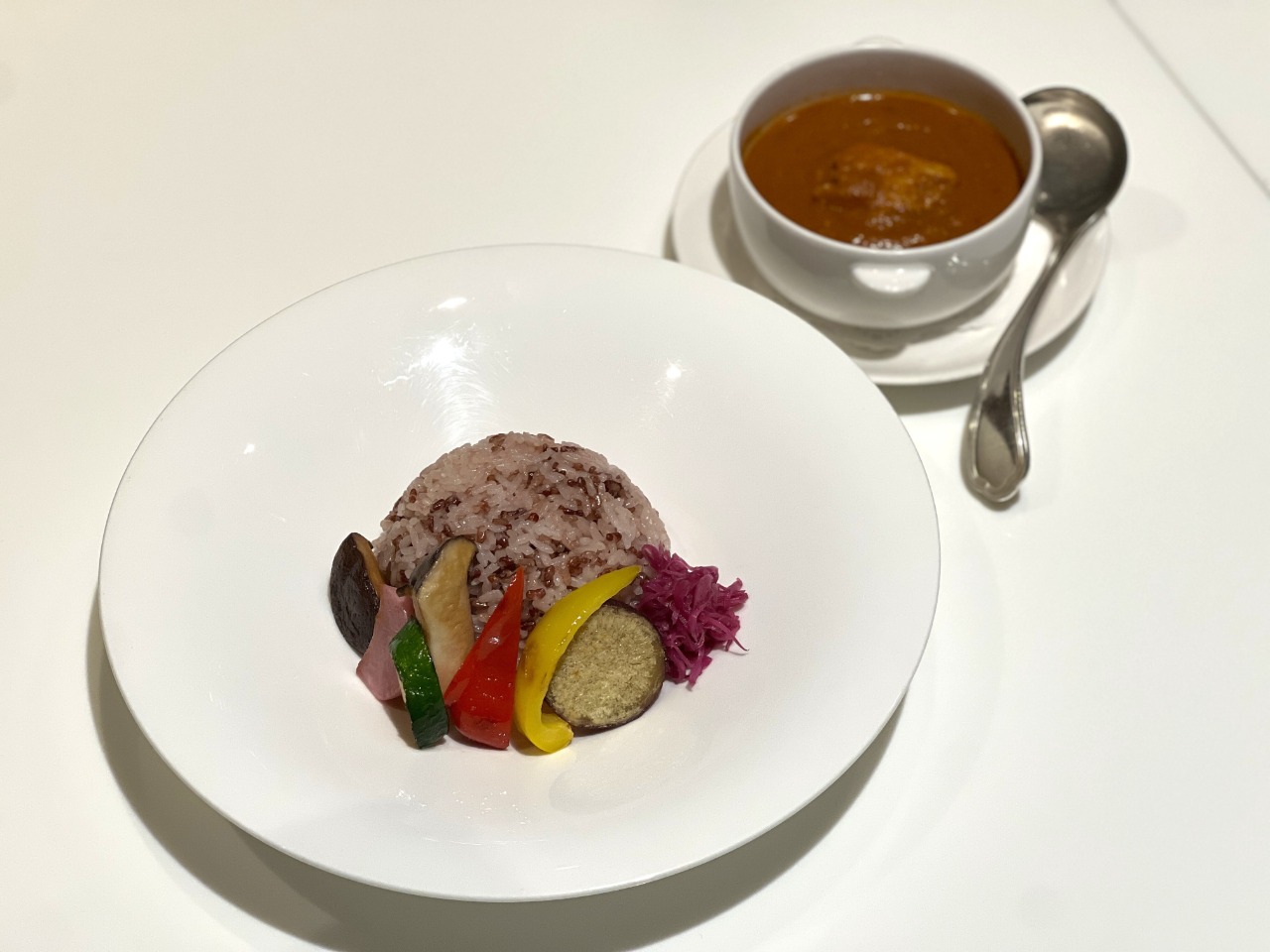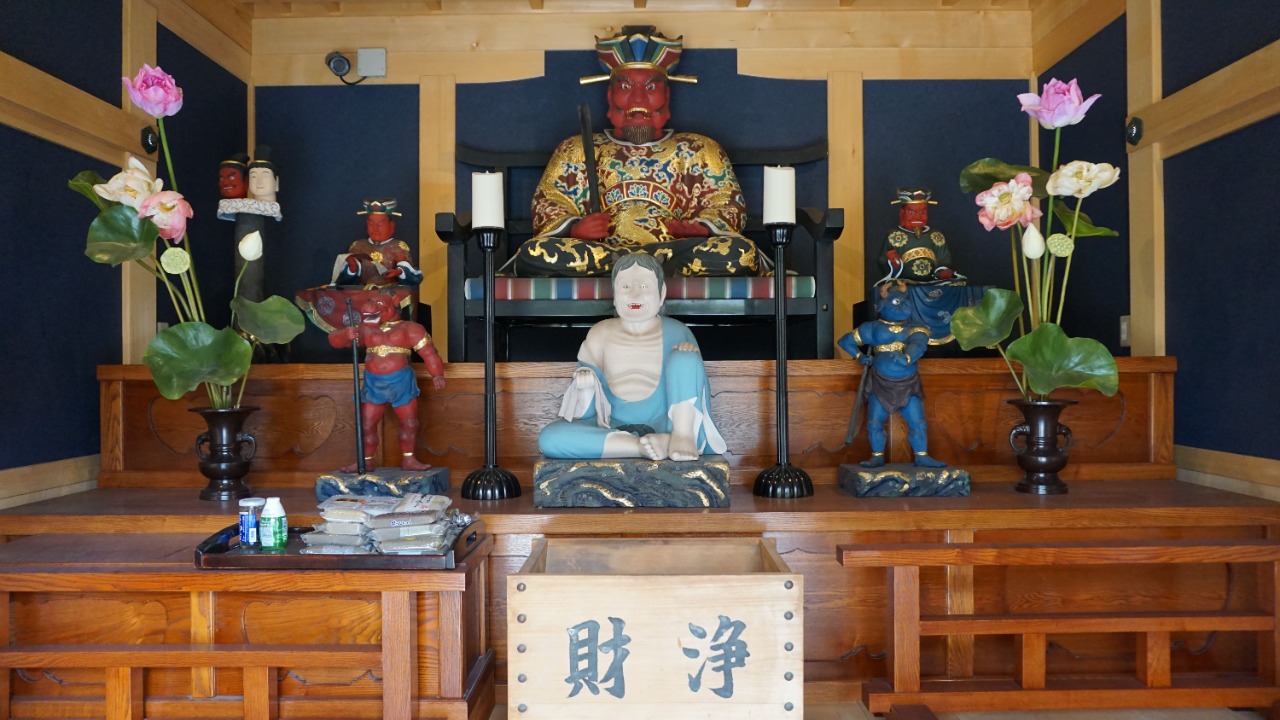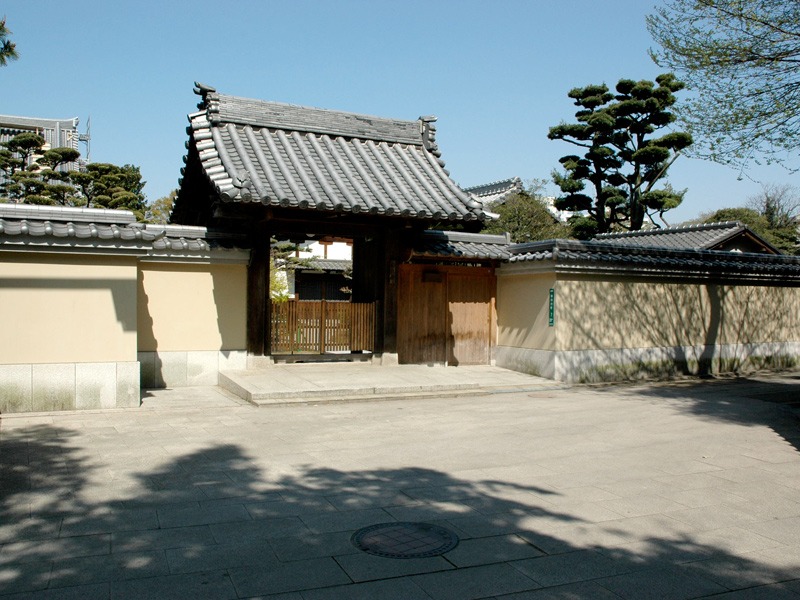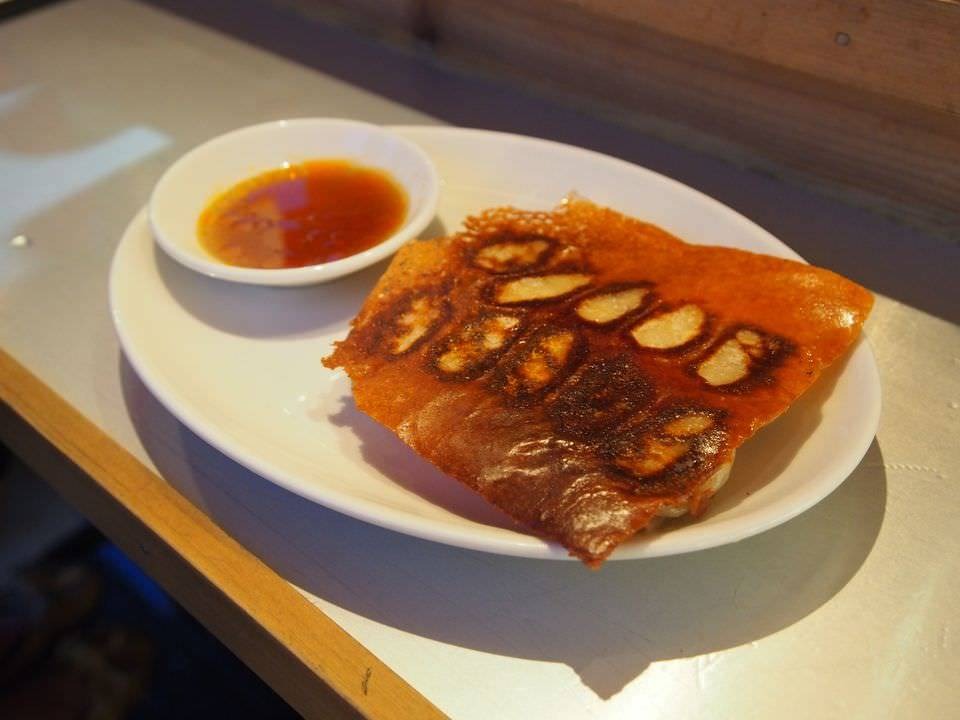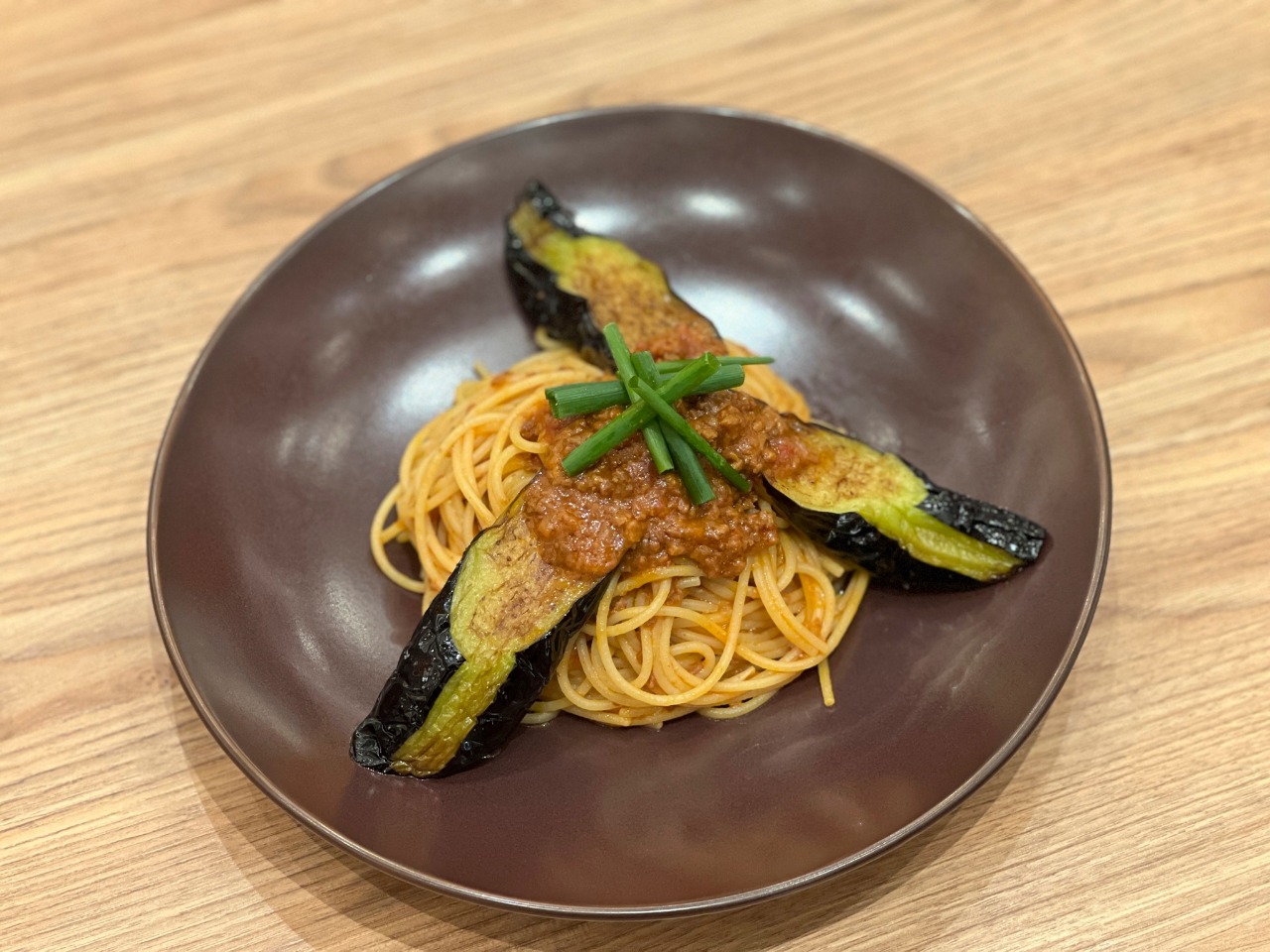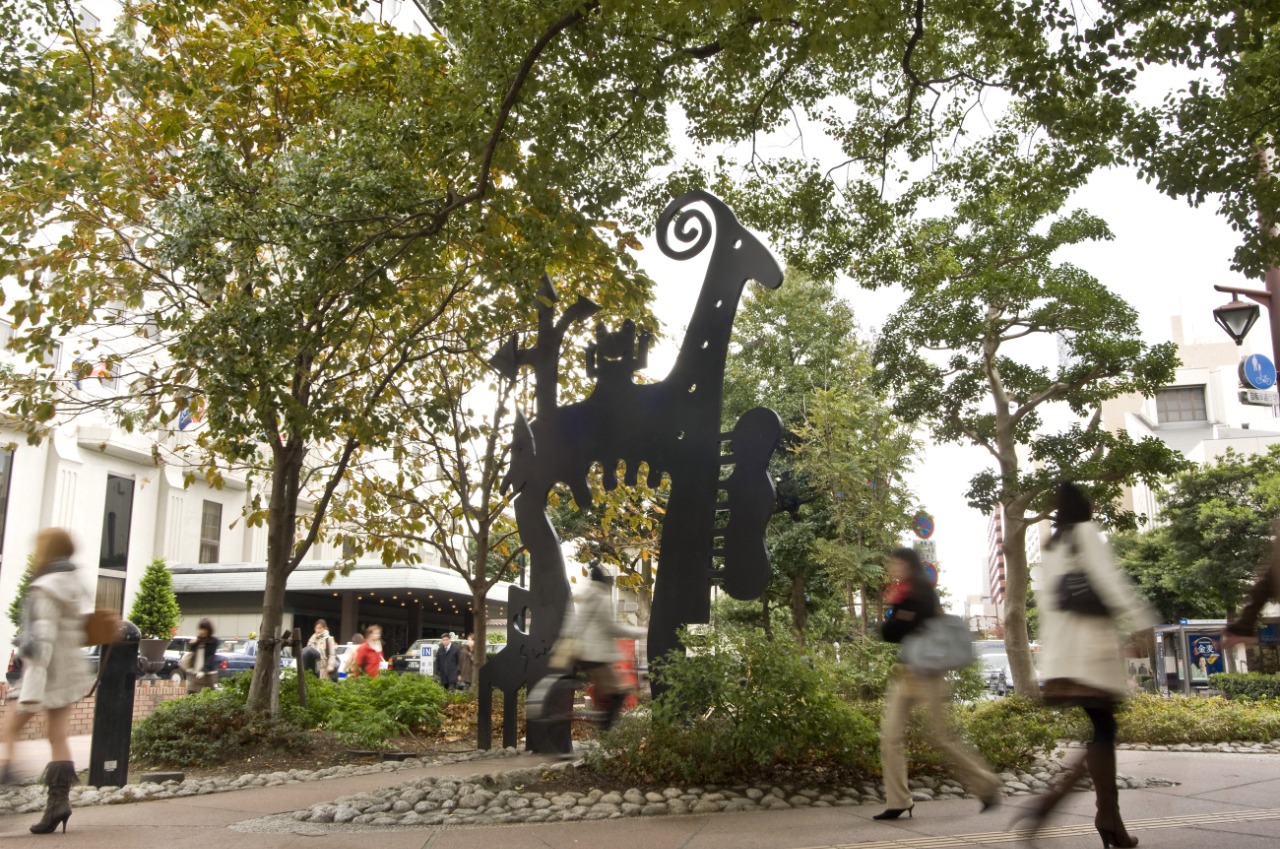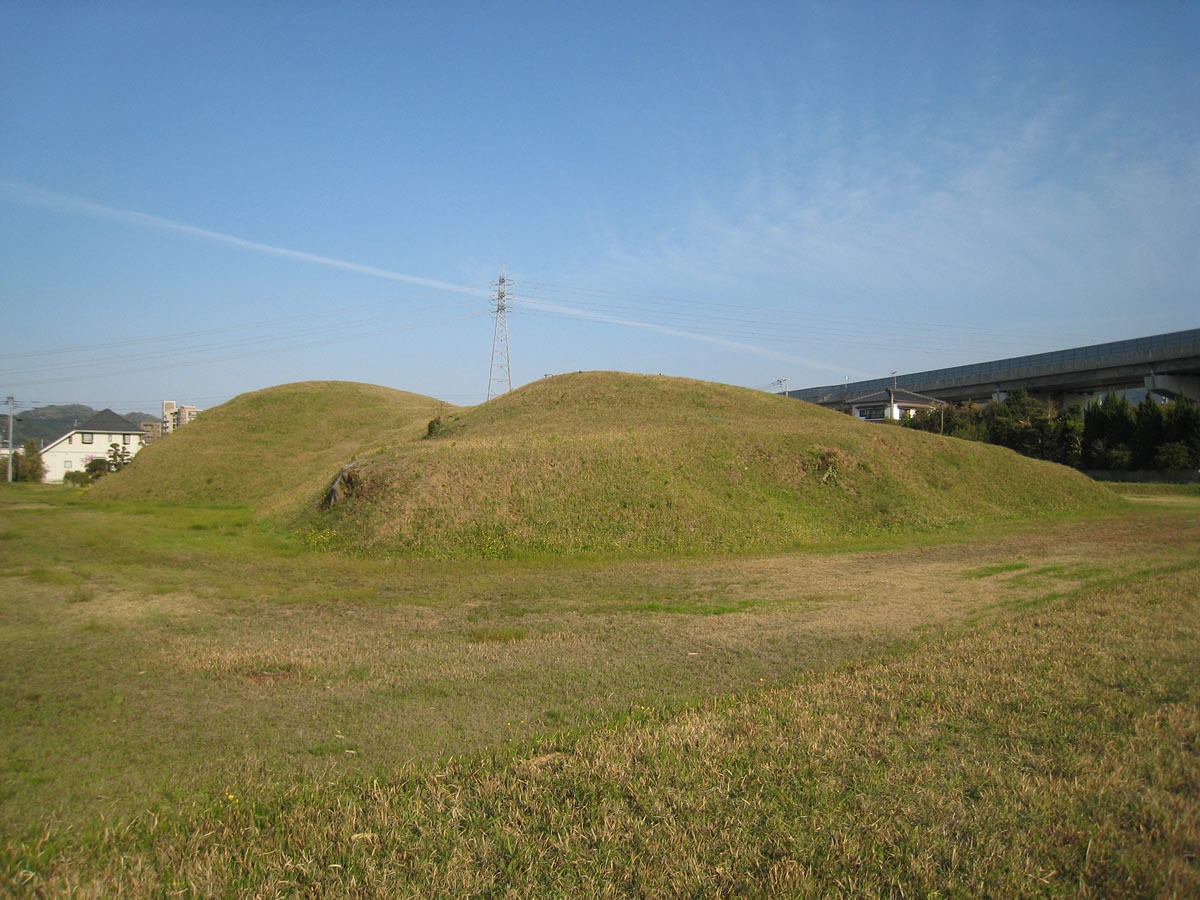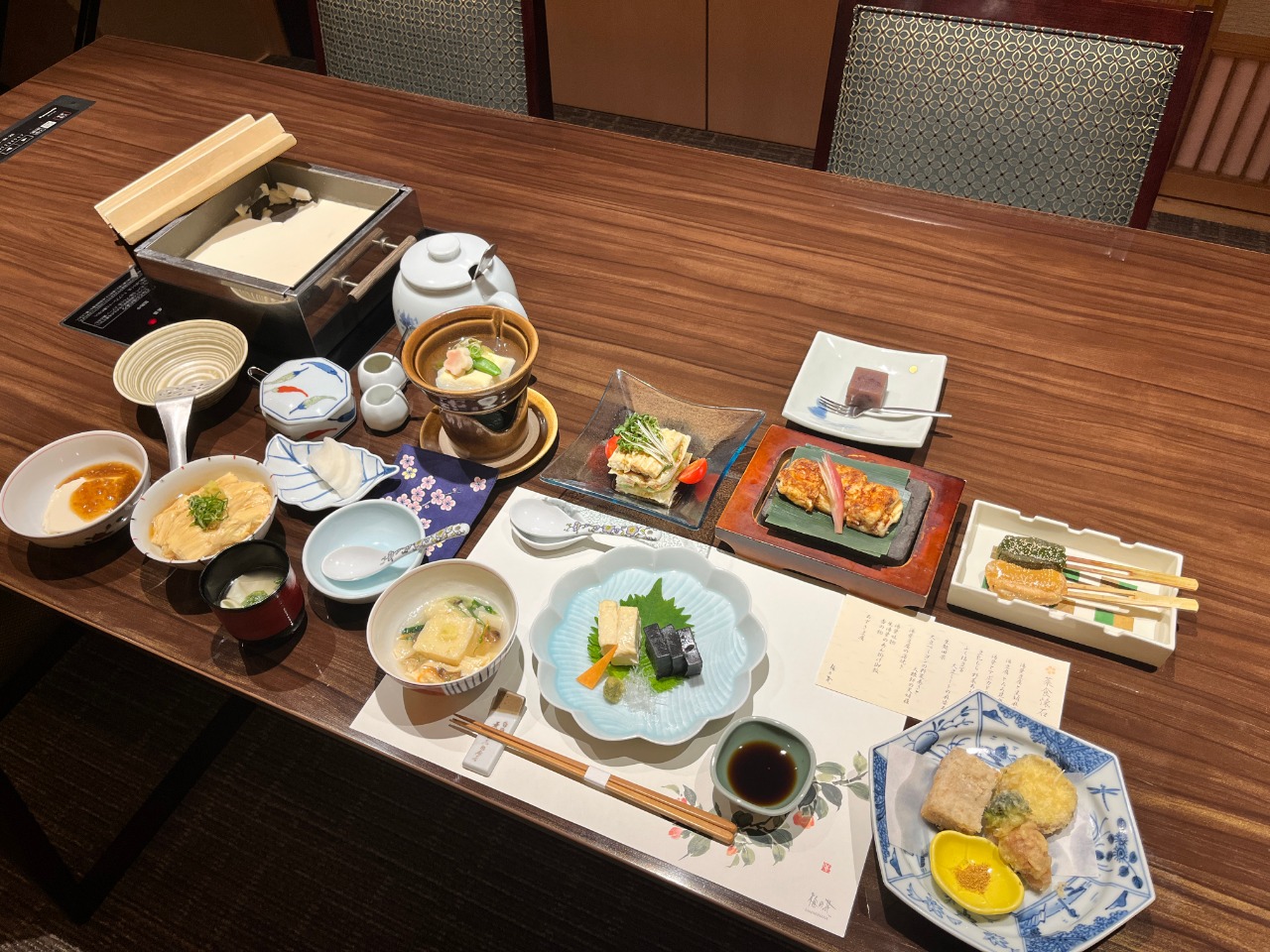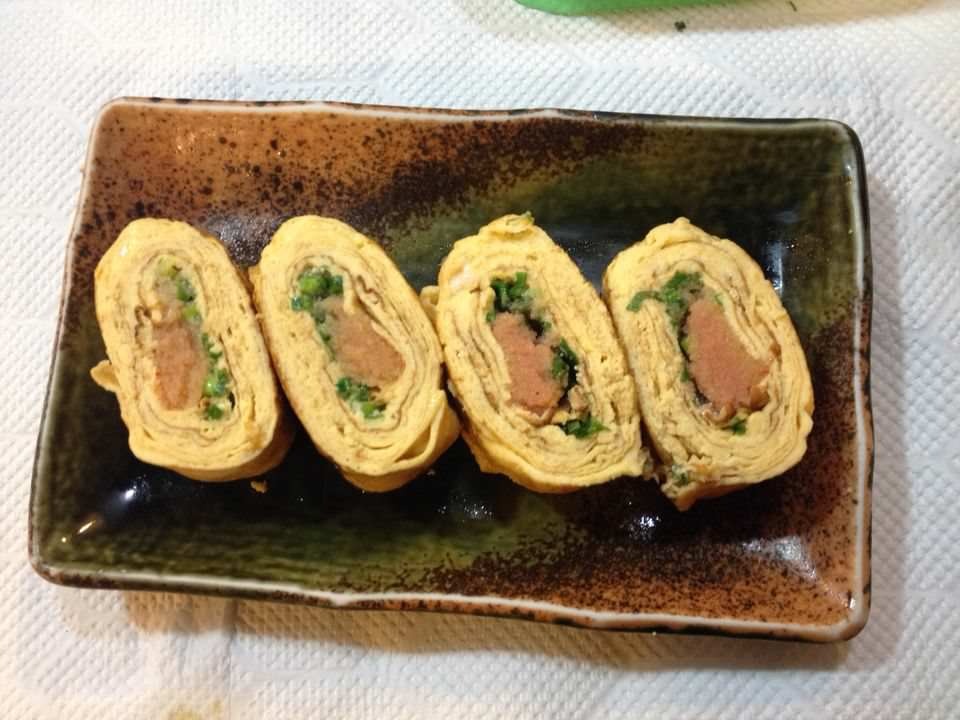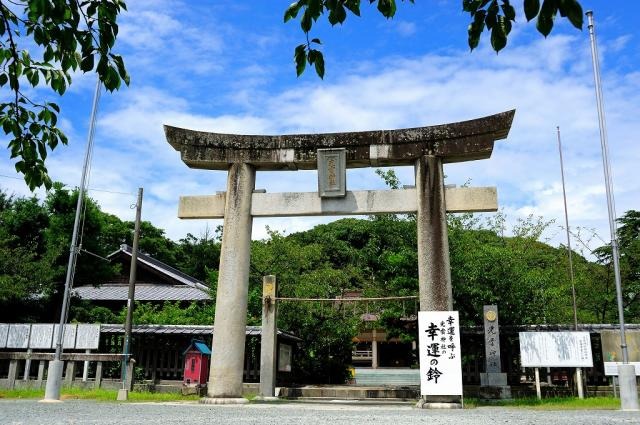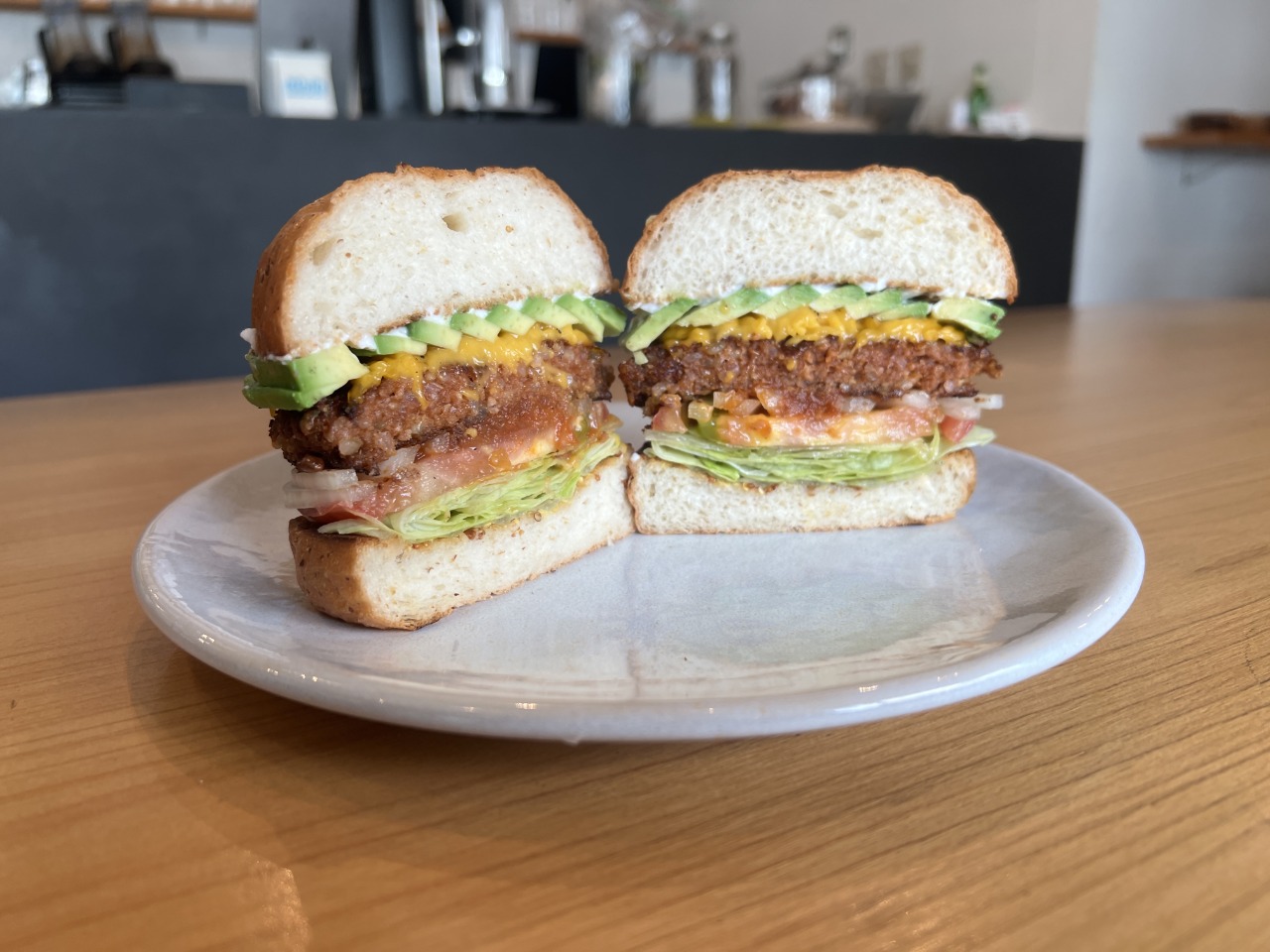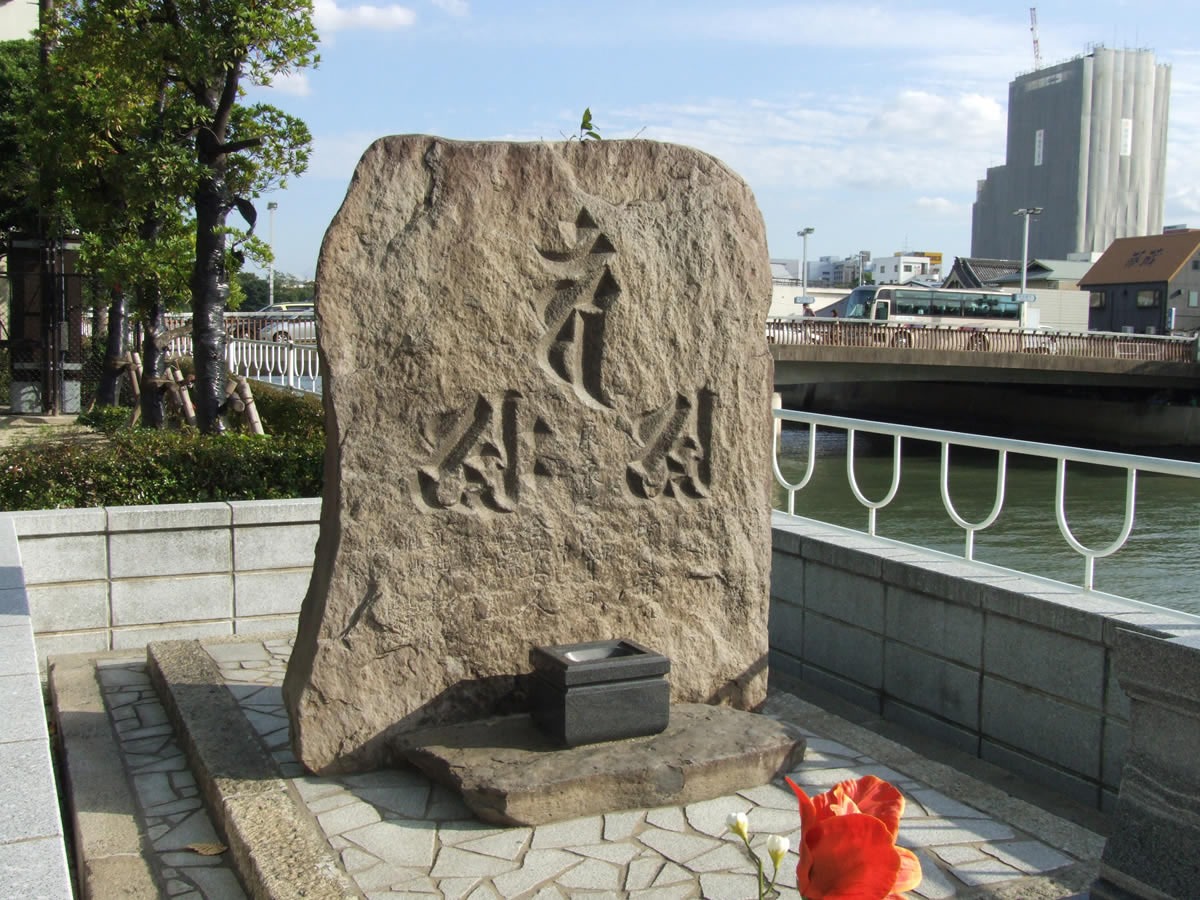
Nureginu Zuka (burial mound)
Hakata Area | History & Culture Nureginu Zuka (burial mound), Meibonji-itabi (monument board) of Koei 3 (1344)
During the reign of Emperor Shomu (724-749), a daughter of Sano Chikayo, an ancient official of defense in Chuikuzen area (present Fukuoka prefecture), was killed by her own father when he found a wet clothe of a fisherman by the daughter's bed and doubted her misconduct, which had been actually framed up by the step-mother because she was so jealous with the daughter's beauty. This is the word origin of the common expression “Nureginu (a wet clothe)” which means “false accusation”. This burial mound set up in 1344 is said to be the memorial tomb for the daughter. The stone monument of 165 meters is made of whinstone and it is one of the typical buildings from the middle age. Three bold characters on the front symbolize the three spiritual statues which Buddha achieved and taught; Dainichi Nyorai (top), Hodo Nyorai (right bottom) and Tenkuraion Nyorai (left bottom). In the east across the National Route is a Nureginusan Shogenji Temple which was constructed in 1669.



